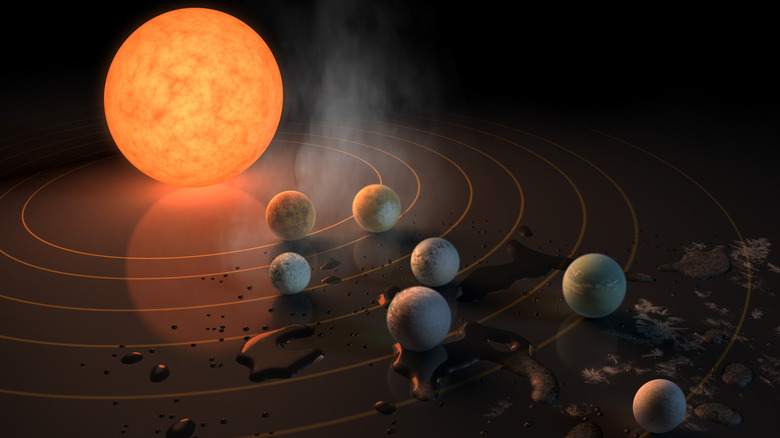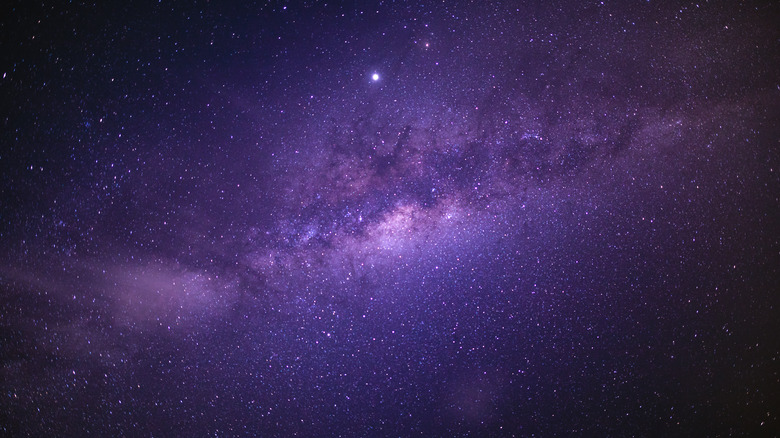Scientists Have Found About 300 Million Planets That Can Support Life
If the day ever comes when the scientific community can present conclusive proof of life on other planets, even if it's something as simple as a crude microorganism, it would almost certainly be the biggest scientific finding in the history of mankind. For decades, we've known that none of the other seven planets in our solar system can support life, and while the possibility exists that Saturn's moon Titan could possibly support life, we haven't confirmed it yet. So far, the space exploration community is only speculating and hoping.
When it comes to exoplanets — that is, planets orbiting other stars in the galaxy, outside of our solar system — things get murkier. The math alone states that the number of exoplanets that could support life is likely in the hundreds of millions, but they're so far away that confirming if they have life is going to be near impossible. That is, unless the civilization that lives on those planets is orders of magnitude more advanced than ours and they manage to contact us first. It hasn't happened yet, but the day may come. And let's hope they're peaceful.
The equation that results in life
In order for a planet (or moon) to support life, several factors have to work in concert with one another in much the same way that they work on Earth. The first part of this equation is the right star: The star can't be too big, too small, too hot, or too cool, as Space explains. Then comes the planet's position relative to its star; the planet must not be so close that the planet is exposed to too much light, heat, and radiation, and not so far away that it gets too little (scientists call this the Goldilocks Zone). Finally, there's the makeup of the planet's continents and oceans. If the continents are too big, they may be mostly uninhabitable dry deserts — at least in their interiors. And if the oceans are too deep, life may not be able to evolve due to the lack of sunlight and temperature. It would also need the right atmosphere, the right gravity, and a host of other requirements.
Of course, all of this is based on the assumption that life on an exoplanet requires the same ingredients — in particular, oxygen and liquid water — that are required for life on Earth. And we may be looking at things the wrong way: Who are we to assume that life anywhere else needs the same things we need? Maybe life has evolved in conditions we can't yet understand?
300 Million Exoplanets
In October 2020, the SETI (Search for ExtraTerrestrial Intelligence) Project announced that Jeff Coughlin, an exoplanet researcher at the SETI Institute and Director of Kepler's Science Office, had crunched the numbers and submitted an academic paper with his estimates of the number of habitable exoplanets in the Milky Way galaxy. He concluded that the number is in the range of 300 million. "This is the first time that all of the pieces have been put together to provide a reliable measurement of the number of potentially habitable planets in the galaxy," Coughlin said.
In February 2022, Space reported even better news. Dirk Schulze-Makuch, an astrobiologist at Washington State University and the Technical University of Berlin, determined that if we stop focusing on Earth-like conditions for life, there may be some planets out there in space that are even better suited to life. He called them "superhabitable" planets, and he estimates that there are possibly 24 of them. Unfortunately, even the closest ones are at least 100 light years from Earth, making communication with them, to say nothing of exploration, out of the question — at least for now.


